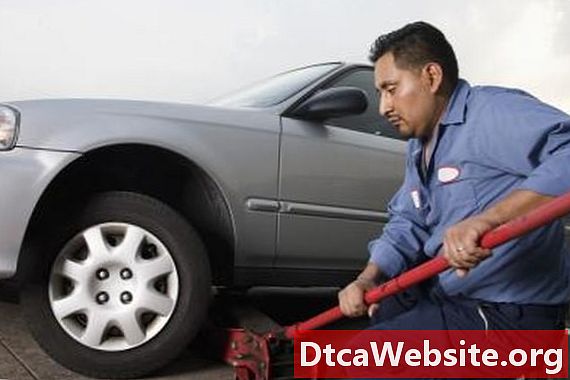
Contenu
- Purpose of a Crankcase Breather Tube
- Causes of Increased Crankcase Pressure
- The Effects of Blow-By on a Motorcycle
- Preventing Blow-By
A stream of oil, flowing from the engines breather tube and into your motorcycles air box, is the result of a condition called blow-by. Caused by an increase of pressure within a motorcycles engine, this phenomenon forces oil up into the breather tube attached to the crankcase.
Purpose of a Crankcase Breather Tube
An engines crankcase at its most basic is a hollow area that contains the engines internal parts and oil supply. As the pistons move, they compress the air trapped within the crankcase, creating pressure that escapes through a vent. Without this vent, pressure could continue to build until it catastrophically forces the engines seals out of place. The vent joints to the motorcycles air box or air cleaner by a tube. Once transferred to the air box, any fumes and fuel vapor emitted from the crankcase is pulled back into the carburetor or fuel-injection system and recycled.
Causes of Increased Crankcase Pressure
A well-maintained engine will create a steady internal atmospheric pressure as it operates, transmitting the extra pressure out through the breather tube without problem. But a rise in pressure caused by a pinch in the crankcase breather tube can result in too much engine oil or blow-by. Blow-by is usually caused by failing piston rings, which are used to separate the engine cylinders combustion chamber from the crankcase. During operation, the ignited air and fuel mixture can work past, or blow by, the damaged piston rings, increasing the crankcase pressure beyond normal limits. The added pressure displaces the engine oil in the only direction of escape: the breather tube.
The Effects of Blow-By on a Motorcycle
From the outside, blow-by seems to do little more than ruin an otherwise perfect air filter. Surely, an oil-soaked air filter will not allow as much air to enter the engine, reducing the engines performance. But blow-by tends to continue in a vicious circle as the oil in the air box is pulled back into the engine. Oil droplets can coat the combustion chamber walls, where it is heated by the ignited air and fuel mixture to form carbon buildup that will wreak further havoc on the piston rings. And so it continues until the rings fail altogether.
Preventing Blow-By
Preventing blow-by usually hinges on your maintenance habits. Checking your crankcase breather hose for kinks or obstruction can go a long toward preventing pressure buildup. Keeping the engine oil filled properly and well below the engines maximum capacity will also provide enough space for the crankcase pressure to expand safely. If you are already experiencing blow-by, you will need to replace the piston rings and disassemble the engine cylinder to remove built-up carbon.


